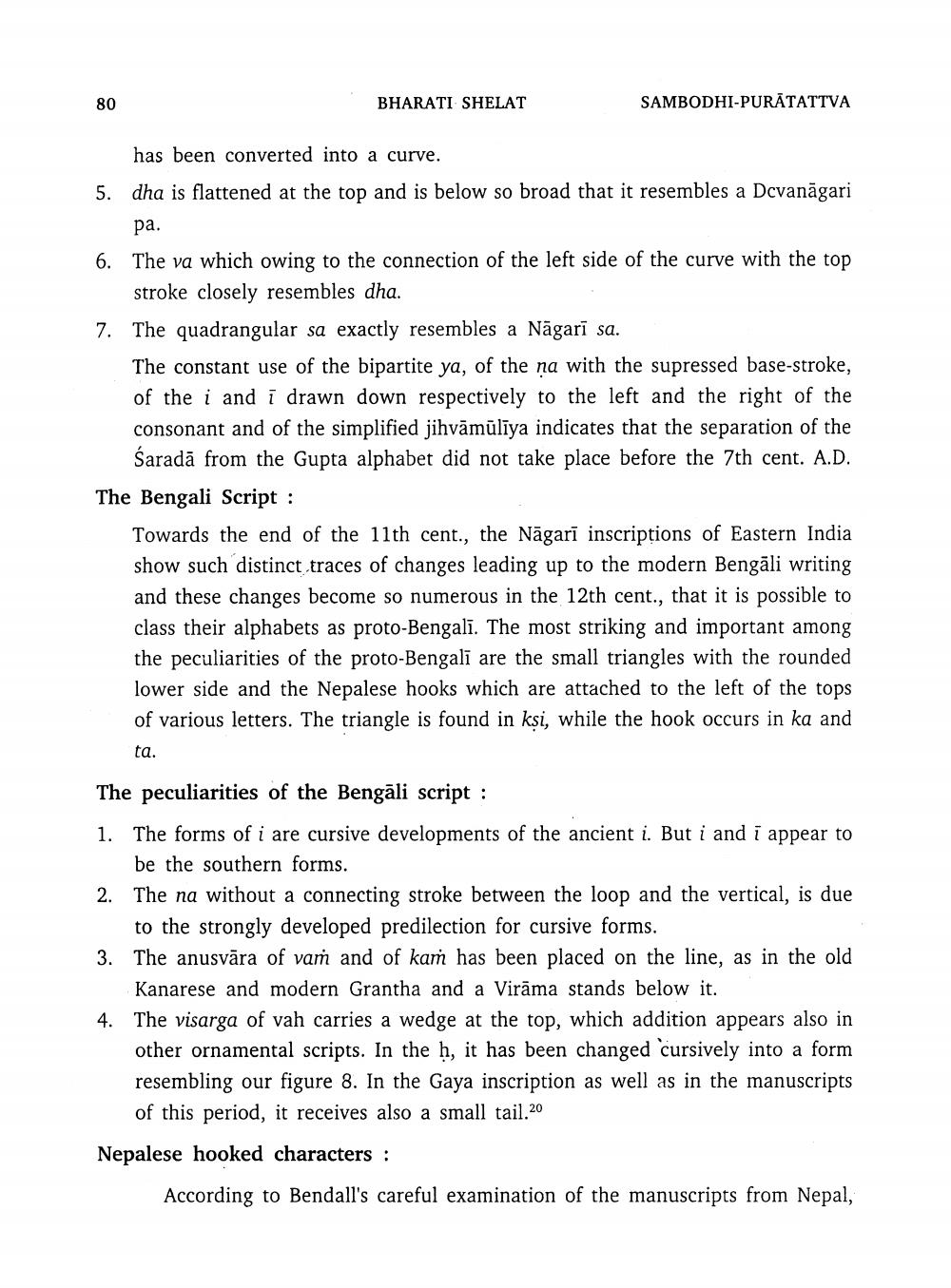________________
80
BHARATI SHELAT
SAMBODHI-PURĀTATTVA
has been converted into a curve. 5. dha is flattened at the top and is below so broad that it resembles a Dcvanāgari
pa. 6. The va which owing to the connection of the left side of the curve with the top
stroke closely resembles dha. 7. The quadrangular sa exactly resembles a Nāgarī sa.
The constant use of the bipartite ya, of the na with the supressed base-stroke, of the i and i drawn down respectively to the left and the right of the consonant and of the simplified jihvāmūlīya indicates that the separation of the
Saradā from the Gupta alphabet did not take place before the 7th cent. A.D. The Bengali Script :
Towards the end of the 11th cent., the Nāgarī inscriptions of Eastern India show such distinct traces of changes leading up to the modern Bengāli writing and these changes become so numerous in the 12th cent., that it is possible to class their alphabets as proto-Bengalī. The most striking and important among the peculiarities of the proto-Bengalī are the small triangles with the rounded lower side and the Nepalese hooks which are attached to the left of the tops of various letters. The triangle is found in ksi, while the hook occurs in ka and ta.
The peculiarities of the Bengāli script :
1. The forms of i are cursive developments of the ancient i. But i and i appear to
be the southern forms. 2. The na without a connecting stroke between the loop and the vertical, is due
to the strongly developed predilection for cursive forms. 3. The anusvāra of vam and of kam has been placed on the line, as in the old
Kanarese and modern Grantha and a Virāma stands below it. 4. The visarga of vah carries a wedge at the top, which addition appears also in
other ornamental scripts. In the ḥ, it has been changed cursively into a form resembling our figure 8. In the Gaya inscription as well as in the manuscripts of this period, it receives also a small tail.20
Nepalese hooked characters :
According to Bendall's careful examination of the manuscripts from Nepal,




